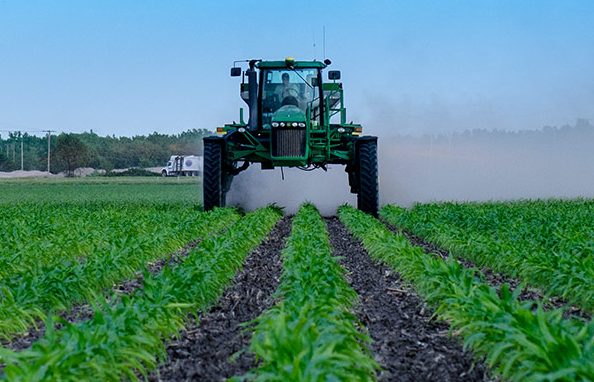|
|
Growers across the country are continuously searching for new ways to improve their fertility programs. Up against unpredictable weather patterns and at the mercy of Mother Nature, growers are concerned about protecting their nitrogen (N) inputs.
It's not only one of the most vital nutrients in modern crop production, but one of the most challenging nutrients to manage. As a result, sidedressing N on corn acres is becoming a standard practice for many growers to improve the efficiency and effectiveness of the N fertilizer they apply.
Throughout the years, sidedressing equipment has evolved, allowing producers to cover more acres with increased flexibility in timing of application. When choosing equipment, there are many items producers should consider, including N fertilizer, equipment capability and price.
The first thing to consider when purchasing sidedress equipment is the type of N fertilizer applied. All N fertilizers can be used for sidedress, however, some offer more advantages than others.
Anhydrous ammonia is a standard option for sidedressing, yet producers must be extremely careful around this product. UAN is a very good option for producers, especially when injected into the ground or dribbled between rows.
Broadcast-applied urea also is a good N source, but can cause leaf burn and injure the crop. Both urea and UAN are susceptible to volatilization, so it is recommended to treat these products with an N stabilizer.
Once the fertilizer source is determined, equipment options and features become the focus. Today, many producers are converting old equipment to fit their sidedressing needs. Producers can start with an existing toolbar (for instance, a row crop cultivator), remove all ground-engaging equipment, and add coulters with rear knives or injectors.
Then, by adding a simple pump and plumbing, as well as saddle tanks or mounting a tank on the application bar, they have created an easy and inexpensive liquid sidedress applicator. It is important to ensure the coulters and knives or injectors work well together for proper placement.
Timing has always been a concern with sidedress applications, however, with high clearance sprayers, growers have a wider window of opportunity to apply fertilizer. New high clearance sprayers feature longer booms and larger tanks, allowing producers to cover more acres in less time.
Many companies offer booms 60 feet or longer and tank sizes vary from 1,000 gallons to 2,400 gallons. These sprayers can be adapted with nitrogen toolbars, drop hoses or solid-stream nozzles.
Producers using drop hoses or solid-stream nozzles can benefit from crop sensors and variable-rate spray nozzles. Crop sensors determine which areas of the field need additional fertilizer and which areas do not.
The sensor technology measures crop health on-the-go and dispenses the correct amount of fertilizer for each pass across the entire field to achieve optimum yields. With this technology, producers can save money and protect the environment by applying only the necessary amount of fertilizer.
By using variable-rate spray nozzles, producers can take sensor results one step further. When using traditional nozzles, producers had to decrease field speeds in order to maintain the proper pressure for optimum output. Today, variable rate nozzles allow for greater rate flexibility while maintaining speed.
After determining your fertilizer and equipment needs, cost should be taken into consideration. Not all growers can justify owning high-capacity sprayers, so they must rely on smaller sprayers or custom applicators.
According to a recent article in Farm Industry News, Kevin Dhuyvetter, agricultural economist at Kansas State University Research and Extension, says 10,000 to 12,000 total acres sprayed per year has historically been the break-even level where it makes economic sense for a farmer to buy his own self-propelled sprayer. To determine if the cost will work for you, you can compare the cost per acre for buying the sprayer to custom application.
To figure cost per acre, divide the cost of the sprayer by the total number of acres you will cover, including multiple passes. Dhuyvetter and his colleague Terry Kastens have developed an Excel spreadsheet called OwnSprayer.xls to help with this calculation. Other tools, such as KSU’s Guidance & Section Control Profit Calculator, can be used to analyze technologies associated with guidance systems and section controllers.
Determining the right N source, type of equipment and price is essential when purchasing new sidedress equipment. Understanding specific needs combined with research will help growers make the proper equipment choice to fit their operation.

 Sidedressing N on corn acres is becoming a standard practice for many growers to improve the efficiency and effectiveness of the N fertilizer they apply.
Sidedressing N on corn acres is becoming a standard practice for many growers to improve the efficiency and effectiveness of the N fertilizer they apply.




Post a comment
Report Abusive Comment